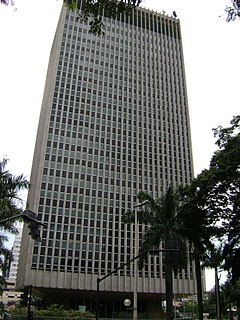
Hydroelectricity is electricity produced from hydropower. In 2015, hydropower generated 16.6% of the world's total electricity and 70% of all renewable electricity, and was expected to increase by about 3.1% each year for the next 25 years.
The Barron Gorge Hydroelectric Power Station in Queensland, Australia is an electricity power station commissioned in 1963 with a maximum capacity of 66 megawatts (89,000 hp). It is located in the locality of Barron Gorge in the Wet Tropics World Heritage Area 20 kilometres (12 mi) north-west of Cairns. It replaced an earlier station which was the first underground power station in the country and the first hydroelectric station in Queensland. The power station was refurbished in 2006.

Guthega Power Station is located in the Snowy Mountains region of New South Wales, Australia. The power station's purpose is for the generation of electricity. It is the first to be completed and smallest of the initial seven hydroelectric power stations that comprise the Snowy Mountains Scheme, a vast hydroelectricity and irrigation complex constructed in south-east Australia between 1949 and 1974 and now run by Snowy Hydro.
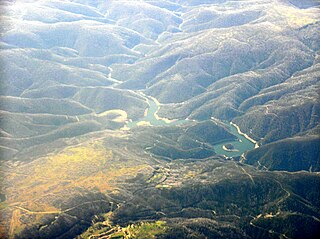
Tumut Hydroelectric Power Station is a series of three hydroelectric power stations on the Tumut River in New South Wales, Australia, that are part of the Snowy Mountains Scheme.
The electricity sector in Brazil is the largest in South America. Its currently installed capacity by the end of 2016 was 150,338 MW, a 9.500 MW increase on 2015. The installed capacity grew from 11,000 MW in 1970 with an average yearly growth of 5.8% per year. Brazil has the largest capacity for water storage in the world, being highly dependent on hydroelectricity generation capacity, which meets over 70% of its electricity demand. The national grid is composed 80% from renewable sources. This dependence on hydropower makes Brazil vulnerable to power supply shortages in drought years, as was demonstrated by the 2001-2002 energy crisis.

The Abaeté River is a river of Minas Gerais state in southeastern Brazil. Its origin is in the Serra da Canastra, about 20 kilometres (12 mi) north of São Gotardo and it passes through São Gonçalo do Abaeté. The river runs nearly north and empties into the São Francisco River, the confluence being located at 18°2′15″S45°11′14″W. The Pontal area at the Abaeté River mouth is an important spawning site for fish.
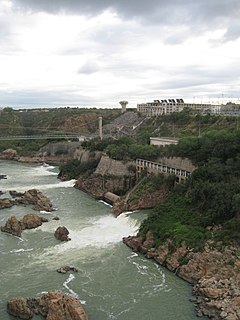
The Paulo Afonso Hydroelectric Complex, also known as the Paulo Afonso Complex, is a system of three dams and five hydroelectric power plants on the São Francisco River near the city of Paulo Afonso in Bahia, Brazil. The complex exploits an 80-metre (260 ft) natural gap on the river, known as the Paulo Afonso Falls. Constructed in succession between 1948 and 1979, the dams support the Paulo Afonso I, II, III, IV and Apollonius Sales (Moxotó) power plants which contain a total of 23 generators with an installed capacity of 4,279.6 megawatts (5,739,000 hp).

The Engineer Sérgio Motta Dam, formerly known as the Porto Primavera Dam, is an embankment dam on the Paraná River near Rosana in São Paulo, Brazil. It was constructed between 1980 and 1999 for hydroelectric power production, flood control and navigation. Estimated 11 millions tropical trees submerged

Eletrobras Furnas is a regional power utility and a major subsidiary of Eletrobras. The company generates or transmits electricity to 51% of households in Brazil and more than 40% of the nation's electricity passes through their grid. The company has a generating capacity of 10,050 MW which corresponds to 10% of Brazil's electrical production.

The São Simão Dam is an embankment dam on the Paranaíba River near São Simão in Goiás/Minas Gerais, Brazil. It was constructed for hydroelectric power production and flood control. The dam was completed in 1978 and all generators were operational by 1979. In 1977, the first use of roller compacted concrete in Brazilian dam construction occurred on the São Simão.

The Emborcação Dam, also known as Theodomiro Santiago, is an embankment dam on the Paranaíba River near Araguari in Minas Gerais, Brazil. It was constructed for hydroelectric power production and flood control.

The Três Marias Dam, also known as Bernardo Mascarenhas, is an embankment dam on the São Francisco River near Três Marias in Minas Gerais, Brazil. It was constructed for hydroelectric power production and flood control. The dam was completed in 1961 and its first generator was operational in 1962. The dam's power plant is named after Bernard Mascarenhas who in 1889, built South America's first major hydroelectric power plant in Brazil, the Marmelos Zero Power Plant.

Stave Falls Dam is a dual-dam power complex on the Stave River in Stave Falls, British Columbia, Canada. The dam was completed in 1912 for the primary purpose of hydroelectric power production. To increase the capacity of Stave Lake, the dam was raised in 1925 and the Blind Slough Dam constructed in an adjacent watercourse 500 m (1,600 ft) to the north, which was the site of the eponymous Stave Falls. In 2000, the dam's powerhouse was replaced after a four-year upgrade. The powerhouse was once British Columbia's largest hydroelectric power source and is a National Historic Site of Canada.

Irapé Dam, the tallest dam in Brazil, is an embankment dam on the Jequitinhonha River in the state of Minas Gerais. It is on the border of Berilo and Grão Mogol districts, about 26 kilometres (16 mi) west of Virgem da Lapa. The dam was constructed between 2002 and 2006 for the purpose of hydroelectric power generation.
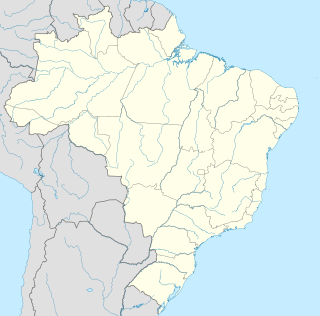
Peixoto Dam, also known as Mascarenhas de Moraes Hydroelectric Plant, is a hydroelectric dam on the Grande River in the state of Minas Gerais, Brazil, about 20 kilometres (12 mi) west of Delfinópolis.
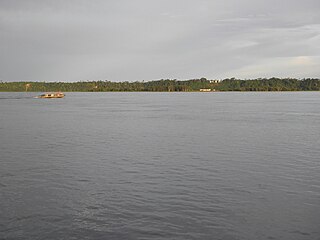
The Jatobá Hydroelectric Power Plant is a planned hydroelectric power plant and dam on the Tapajós river in the state of Pará, Brazil. As of 2017 the project was suspended.







